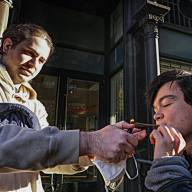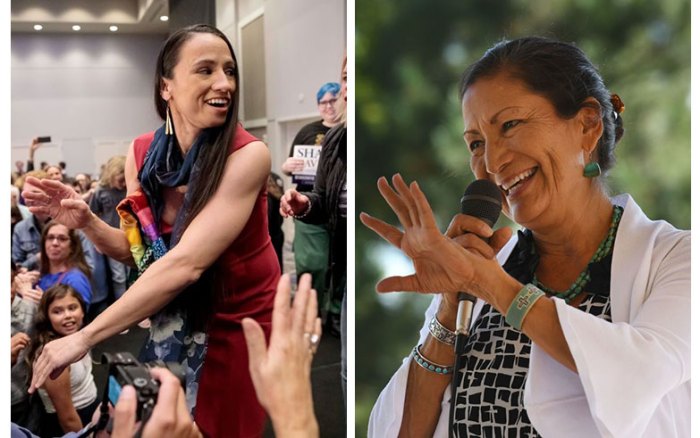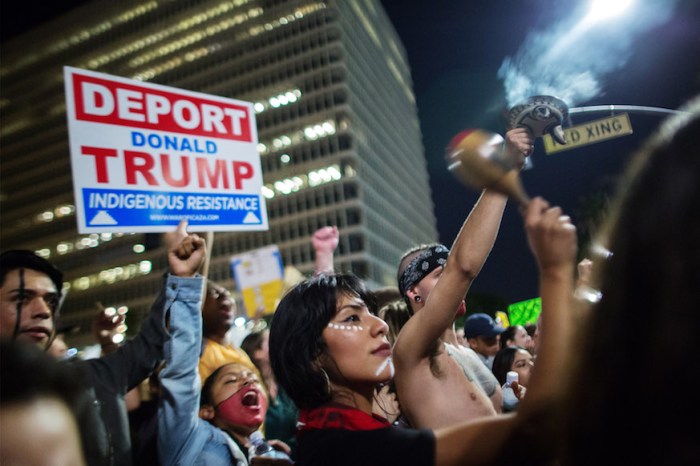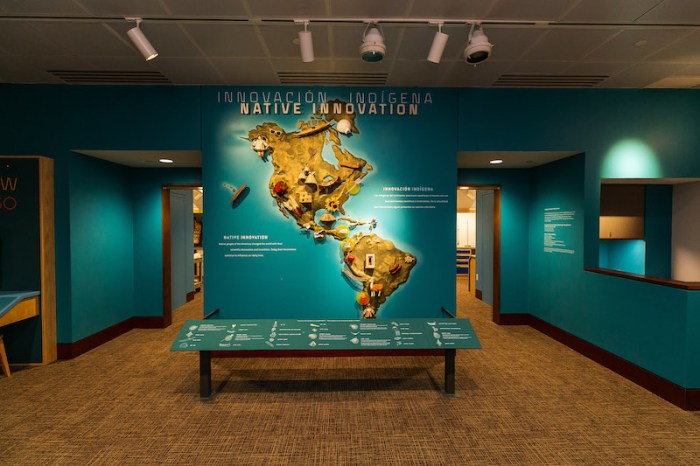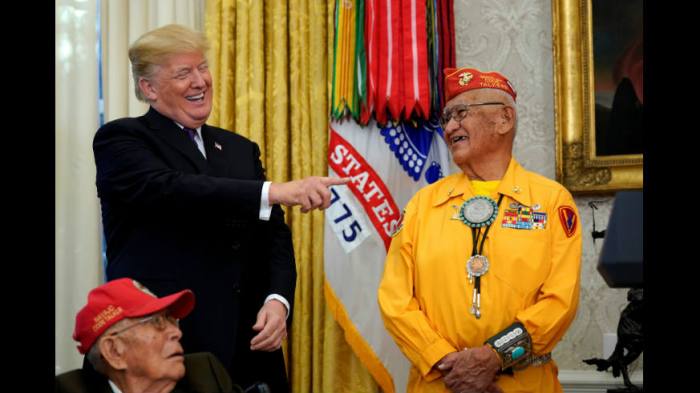The story of Thanksgiving is often presented as a heartwarming, welcoming tale in which Pilgrims and Native Americans came together to share crops, bonding over the feast.
But that story leaves out the struggles and horrors Natives faced at the hands of those colonists, their descendants argue. That’s why every year, Native Americans and allies gather at Cole’s Hill, above Plymouth Rock where those Pilgrims first landed, for the National Day of Mourning.
An annual tradition since 1970, the National Day of Mourning is a time for Native American voices to truly be heard about both their ancestors’ true histories and their community’s current struggles, which are far too often silenced.
“Indigenous people give thanks all the time. We’re not against giving thanks, and we’re not against people having meals with their families,” said Mahtowin Munro, co-leader of the United American Indians of New England (UAINE), which organizes the day.
“The real underlying issue is this idea that the Pilgrims were so wonderful and amazing, that they came over and Native people were happy to see them, and they all sat down together and live happily ever after,” she continued. “And that then, Native people just faded away.”
While Native Americans are represented in our depictions of Thanksgiving, they’re barely visible the rest of the year. While the Day of Mourning does address that buried history, it also serves as a time to talk about current issues indigenous people face.
Last year, a focus of the day was in solidarity with the water protectors at Standing Rock. This year, the 48th Day of Mourning, UAINE wanted to give attention to those in Mexico, Puerto Rico and throughout the Caribbean who are still rebuilding their lives after devastating earthquakes and hurricanes.
“One of the things raised every year is that we didn’t cross the border, the border crossed us. …There were very severe earthquakes in Mexico, not only in Mexico City, but other areas with large indigenous populations, and we want to express solidarity for those people,” Mahtowin said.
“With Puerto Rico and the Caribbean, that is the part of the world where [Christopher] Columbus and colonialism hit first,” she added. “Because we’ve been colonized as a result of Europeans coming here, with our land taken from us, we certainly feel strong solidarity with them.”
National Day of Mourning begins with an opening ceremony and blessing, followed by speeches and then a march down to Plymouth Rock and through the town, and the day ends with a potluck.
Last year, more than 1,000 people from across the country attended the National Day of Mourning, including Natives and non-Natives. To Mahtowin, it’s an important day — not just to raise Native American voices and keep their history alive, but to show that everyone can come together when times are tough.
“We say that ‘we cry from each other’s eyes. Even if it’s not exactly my people and my struggle,” she said. “I’m going to feel really grateful to be there with other Native people, and black people, Asian people, Arab people, white people, Latinx people, and to feel these struggles together and cry from each other’s eyes. It’s an important thing to unite us and help to heal us as human beings.”
The 48th National Day of Mourning is Nov. 23, 2017 at noon on Cole’s Hill, Plymouth, Massachusetts. Some groups are organizing buses to the event: From Boston, a bus will board at 284 Amory St. in Jamaica Plain; buy tickets here. From New York City, The International Action Center is sending a bus from 147 W. 24 St., 2nd floor, in Manhattan; get more information here. A bus is also leaving from 1685 Nostrand Ave. in Brooklyn, see here for details.







